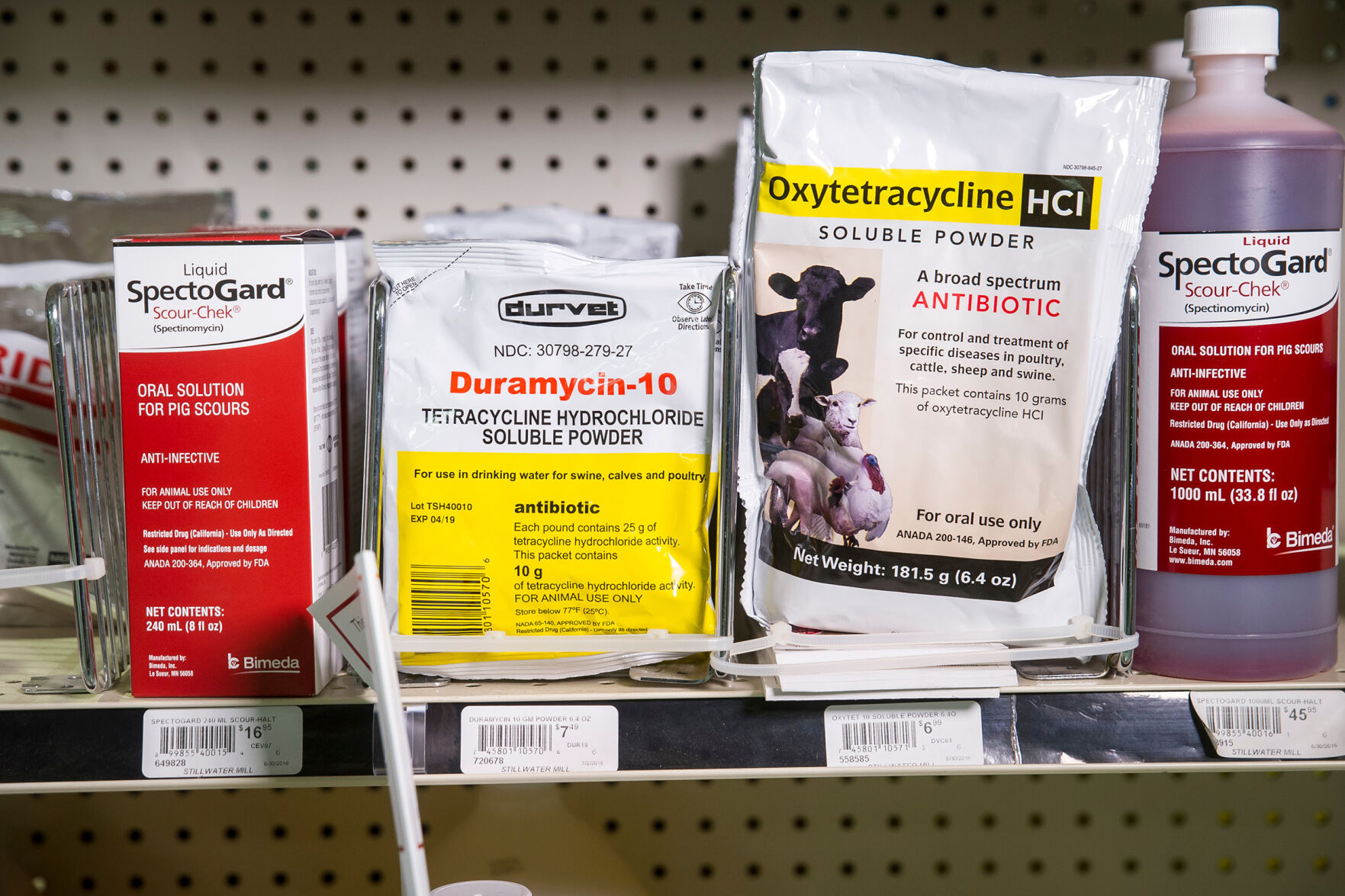Known as Guidance for Industry #263, Food and Drug Administration now requires some antimicrobial medications for food-producing and companion animals to have veterinarian prescriptions.
In June 2021, the FDA announced a two-year implementation period and soon producers will see a new prescription label and all new effected products entering distribution channels will be labeled as prescription products.
Even with the changes, farmers and ranchers will still have access to appropriate antimicrobials to address animal health issues by consulting with a licensed veterinarian with whom they have established a valid veterinarian-client-patient relationship, the FDA stated in a news release written specifically for farmers and ranchers.
“Just because a drug is prescription status does not necessarily mean you are required to purchase it directly from a veterinarian,” the release stated. “Although certain state requirements may also apply, you may be able to purchase prescription animal drug products from various suppliers or distributors with a valid prescription provided by a licensed veterinarian.”
Dr. A.J. Tarpoff, DVM, associate professor and beef Extension veterinarian at Kansas State University, said GFI 263 is the latest in a series of steps that the FDA has taken to support the judicious use of antimicrobials, not just in animals but humans, too. The approach for food and companion animals was outlined in a 2018 FDA 5-year action plan aimed at supporting antibiotic stewardship in veterinary medicine while ensuring those products were under veterinarian oversight.
“Many folks probably remember the process of implementing the veterinary feed directive, which eliminated production uses of medically important feed-grade antibiotics and put their use to treat and control disease in livestock under the guidance of veterinarians,” he said.
GFI 263 has taken a similar course and was initially released as a draft in 2019 and finalized in 2021 with an implementation date of 2023, the veterinarian said. During the process the FDA has gathered industry input and worked with drug sponsors to properly change product labels for implementation.
Antimicrobial resistance is a concern in both human and veterinary medicine, Tarpoff said. There are many shared classes of antibiotic drugs that are used in both human medicine and veterinary medicine and they are known as “medically important” antibiotics. The directives are planned to help protect the usefulness of those medically important drugs long term as well as limit resistance.
“The goal is not to punish farmers and ranchers rather to ensure effective use into the future to treat and control disease,” Tarpoff said.
GFI 263 is shifting all remaining medically important antibiotics that are sold under over-the-counter status to prescription status under the oversight of a licensed veterinarian, he said.
The only products impacted by the change are medically important antibiotics. The most common products include penicillin, oxytetracycline, sulfas, tyrosine, linomycin, gentamicin, erythromycin and spectinomycin. The products would be used as injectables, mastitis tubes and medicated boluses, he said. Other products such as ionophores, coccidiostats, vaccines and dewormers that are currently over-the-counter will not be impacted by the change.
Most products that producers use currently will still be available for use, he added.
Tarpoff advises livestock producers to continue to have a good working relationship with their local veterinarian. With a valid VCPR producers will have access to products to treat and control diseases within their herds.
“For those producers that already have a VCPR and use prescription medication, there will be minimal changes to their operation,” he said. “The only changes may be where they purchase these products as farm stores or local retailers may not have a pharmacy license. So plan ahead and make these conversations with your veterinarian so you are not caught off guard.”
While GFI 263 went into effect June 11, there will be a slower transition period compared to the veterinary feed directive, Tarpoff said. All new products will have the new prescription label after that date and must be sold through a registered pharmacy to individuals with a prescription.
“However, product currently in distribution channels and on shelves with the OTC label will still be sold as is until that supply runs out or hits the expiration date on the label.”
Dave Bergmeier can be reached at 620-227-1822 or [email protected].




